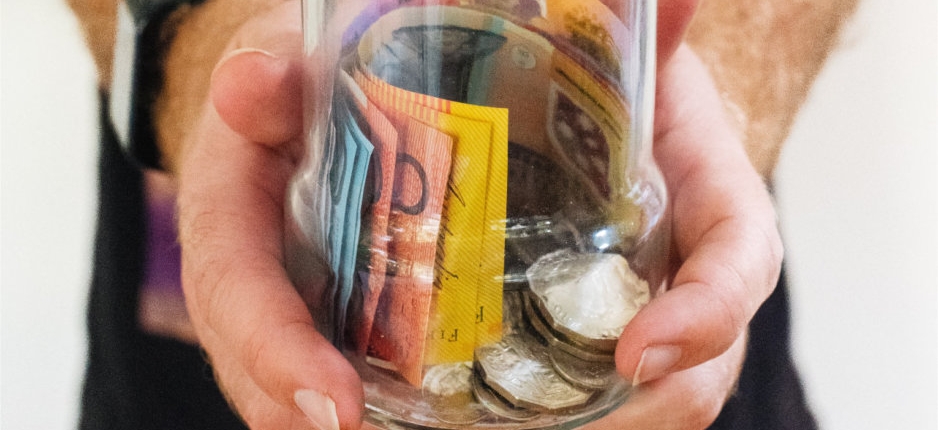Will I Ever See That Money Again?
So often I hear people ask me “a Company that owes me money, just went into Liquidation, will I get paid?”. The answer to that question is well it depends who you are and where you stand in line. So, I have broken up this blog to follow the order of payment in accordance with the Corporations Act, 2001.
Please note that this a long blog – you may want to skip to the section that relates to you.
Secured Creditors
These are companies or individuals that have loaned the Liquidated Company money and properly secured the loan through a general security agreement and registered a security interest on the Personal Property Security Register (“PPSR”) within the proper timeframes. In everyday terms think of a bank giving a business money or an overdraft when you think of secured creditors.
The very next question when I say this to people is, let me go and register a security interest. Unfortunately, it is too late to do so. A security that is registered with 6 months of the appointment of a Liquidator or Administrator generally is too new to be recognised unless the security interest was registered with 20 business days of the date the advance or goods were given to the Liquidated Company.
If you have properly secured your loan to the Liquidated Company, you may see your money back, however it will depend on the amount of assets that the Liquidator is able to realise and how high your security interest ranks among other secured creditors. If you are at the top of the secured creditors, you must be paid in full, before the next highest ranked secured creditors can see $1. If you are the 5th highest secured creditor, chances are your probably won’t see much unless the asset pool is also very high.
Partially Secured Creditors
These are companies that have funded a specific asset for the Liquidated Company to purchase. Think of Toyota Finance funding the sale of a motor vehicle to a company.
So why are they only partially secured? Well they are only funded to the value of the item that they have funded.
Let’s go back to the example Toyota funding a motor vehicle. Generally speaking, when a motor vehicle is funded without a deposit, the three fifths of the term of the loan agreement, goes to pay for the interest for the loan, the two fifths of the loan goes to pay for the motor vehicle itself, i.e. years 1-3 of a loan pay for the loan’s interest in full while years 4-5 pay for the motor vehicle itself or the principal of the loan.
This is why when you ask for a payout of a loan in years 1-3 the payout of the loan is more than what you thought you were loaned. When most people think of a loan, they think of what they asked for i.e. $30,000 to buy the motor vehicle.
When you are reading your loan documents, you need to look at the bottom number which is the total of the principal plus all the interest in the loan and that is the number you should work from. In this scenario the bottom line number is $39,736 on a 11% loan taken over 5 years.
I know the above was full of numbers but stay with me here, when a new car leaves the lot, it depreciates by around 10% in the first month and even more than 20% in the 1st year. So even though you think that your car is worth a lot, it probably is not worth as much as you think.
Simple test to show you my point – write down what you think your car is worth, then go to Redbook.com.au and find your car and take an average of all 4 values it provides. Is your estimate close to what you thought it was? Most likely no.
So now we have a situation where the loan payout is higher than you thought and most likely higher than the value of the motor vehicle, unless you are in year 4 or 5 of a 5-year loan agreement.
If you hand the motor vehicle over to the Liquidator or the partially secured creditor, it will go to auction and the proceeds will be given to the partially secured creditor. The remainder of their debt now becomes unsecured in a Liquidation.
Now here is the kicker, if you have purchased a motor vehicle in a Company name, the Director of the Company, most likely yourself have personally guaranteed to pay any shortfall the partially secured creditors suffers that includes repossession fees, detailing fees, auctioneers fees and any other costs to sell the car at auction.
What can you do – look to refinance the car out of the Company name and into your name personally or another Company prior to Liquidating any Company. Of course, there is a proper way of doing this and we can help you through that process, but basically you will need to properly value the motor vehicle and if there is any equity that exists, that will need to be paid the Company that is being Liquidated as well as payout the partially secured creditor what they are owed.
Employees – Priority Creditors
There are 3 levels of employee entitlements and they too have an order of priority to which ones get paid as follows:
(Please note that there are situations where employees get paid before secured creditors, but I have tried to keep it as simple as possible).
1. Wages and Superannuation
Wages and Superannuation has the top level of priority. So, if there is enough money to pay this level of entitlement, it will be paid in full before $1 is able to be paid to leave entitlement. After a payment for wages and / or superannuation has been made by the Liquidator, they should write to you to advise of such payment being made.
2. Leave
This includes annual leave and long service leave. The comments made in wages and superannuation apply here as well.
3. Termination Entitlements
This includes Pay In Lieu of Notice and Redundancy (if the Company employed more than 15 full time employees). The comments made in wages and superannuation apply here as well.
4. Related Parties
A related party is anyone that is related to the Director of the Company. There is debate about if it is a linear relationship or not between Liquidators, for the purposes of this blog, it is easier to assume that if you are related to the Director, you will be deemed to be a related party. Unfortunately, for these people, the maximum they can claim as a priority creditor for wages and superannuation is $2,000 and for leave $1,500. The remainder of their debt above these maximums is considered to be an unsecured debt (discussed below).
5. Fair Entitlement Guarantee (“FEG”)
The Fair Entitlements Guarantee Scheme was set up to pay unrelated employees outstanding wages, leave and termination entitlements. Superannuation is not covered by FEG. To qualify you must be an employee NOT a subcontractor or contractor, you cannot have been a contractor or subcontractor within 6 months prior to the Company going into Liquidation and your wage must not be more than $2,451 weekly. The other thing you need to understand is that FEG are a law unto themselves, their determination is final. You can ask for their decision to be reviewed, but let’s face it, their ruling is unlikely to change. After FEG have determined and if applicable paid you, any amount owing to you will still rank in the categories discussed above.
Unsecured Creditors
Businesses and individuals that rank here is everyone that is left. This includes subcontractors, suppliers that have not registered a security interest, related employees of the Director, Australian Taxation Office etc.
Unfortunately, if the Company does not own a large pool of assets without finance it is unlikely unsecured creditors will receive a dividend
All is not lost though, what you can do is ask the Liquidator’s office for a letter stating that there will be no dividend so that you can claim in your tax return the amount you lost as a bad debt. I know that this not as good as having your debt paid but it is a consolation prize to reducing your tax bill.
Liquidator’s Remuneration and Disbursements
There is one person that we have not discussed where they fit into the tree being the Liquidator. Generally, they will sit right at the top, however what creditors fail to understand is that the Liquidator must obtain creditor approval for their remuneration and disbursements before taking it.
If creditors do not provide that approval, the Liquidator may go to Court to have their remuneration and disbursements approved. While many think that it is a forgone conclusion for a Court to approve a Liquidator’s remuneration and disbursements, there have been many cases where the Court has either knocked back a Liquidator’s claim for remuneration or the quantum of the remuneration has been reduced.









